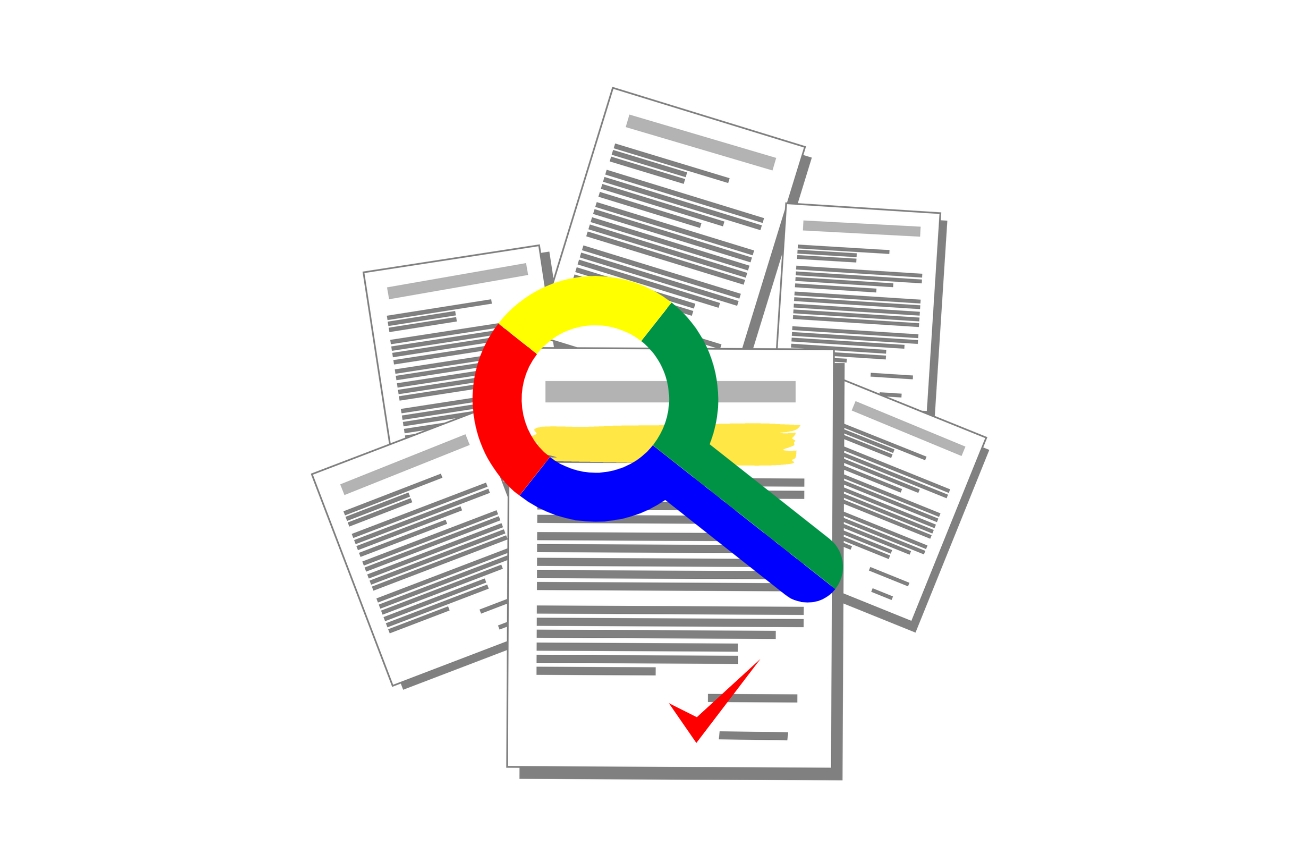The term “entities” has become super popular in the SEO and digital marketing sector in recent years. At SEOCOM, as one of the web positioning agencies with the longest history in Spain, we are aware of and use this concept in our analyses and strategies.
We will delve deeper into this concept and how you can leverage the full potential of entities in your business’s SEO.
What are entities
Entities in Google search are singular, unique, defined, and distinguishable concepts that Google uses to enhance the accuracy and relevance of search results.
They help Google differentiate between ideas and concepts when responding to a search query.
Essentially, entities represent a way to organize information, and you can think of them as a layer above keywords.
While the idea might seem abstract, it is quite tangible and can be observed throughout Google’s search engine and its other products. Google uses a system known as the “Knowledge Graph” which is a structured database that stores information about entities and their interconnections.
The key to the Knowledge Graph is that this system allows Google to establish relationships between entities and attributes of different entities.
Differences Between Entities and Attributes in Google
The difference between entities and attributes is that entities are units with their own unique identity, while attributes are characteristics or properties associated with entities.
It is crucial that you understand the difference between an entity and an attribute. Here’s an example from Wikipedia: “Fish” would be the entity, and “anatomy,” “evolution,” “digestive system,” etc., would be its attributes.
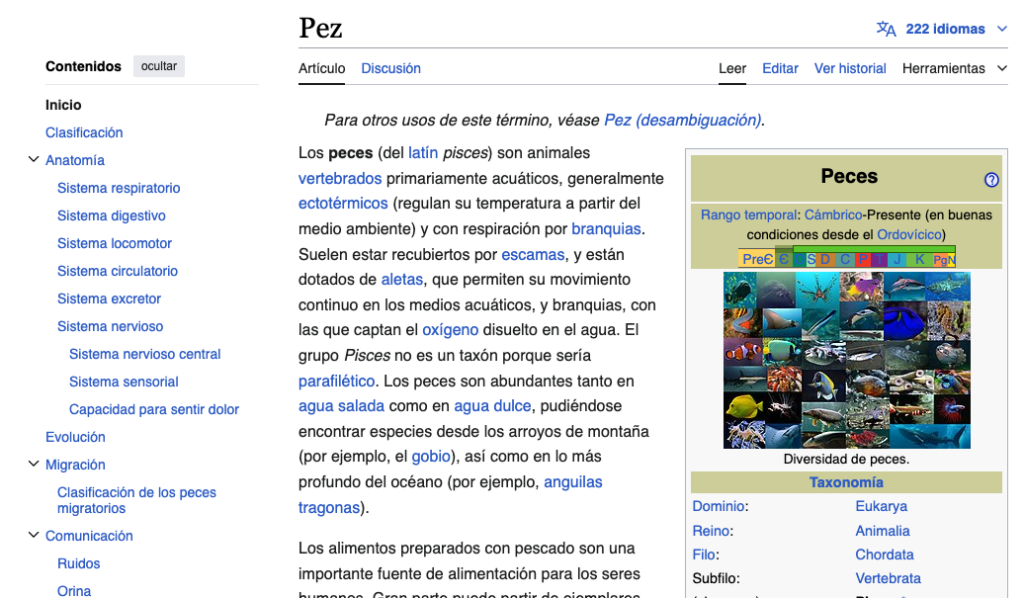
How to view entities in Google
To view entities in Google, it is best to use Google Trends to visualize the entities associated with a keyword. Here’s an example.
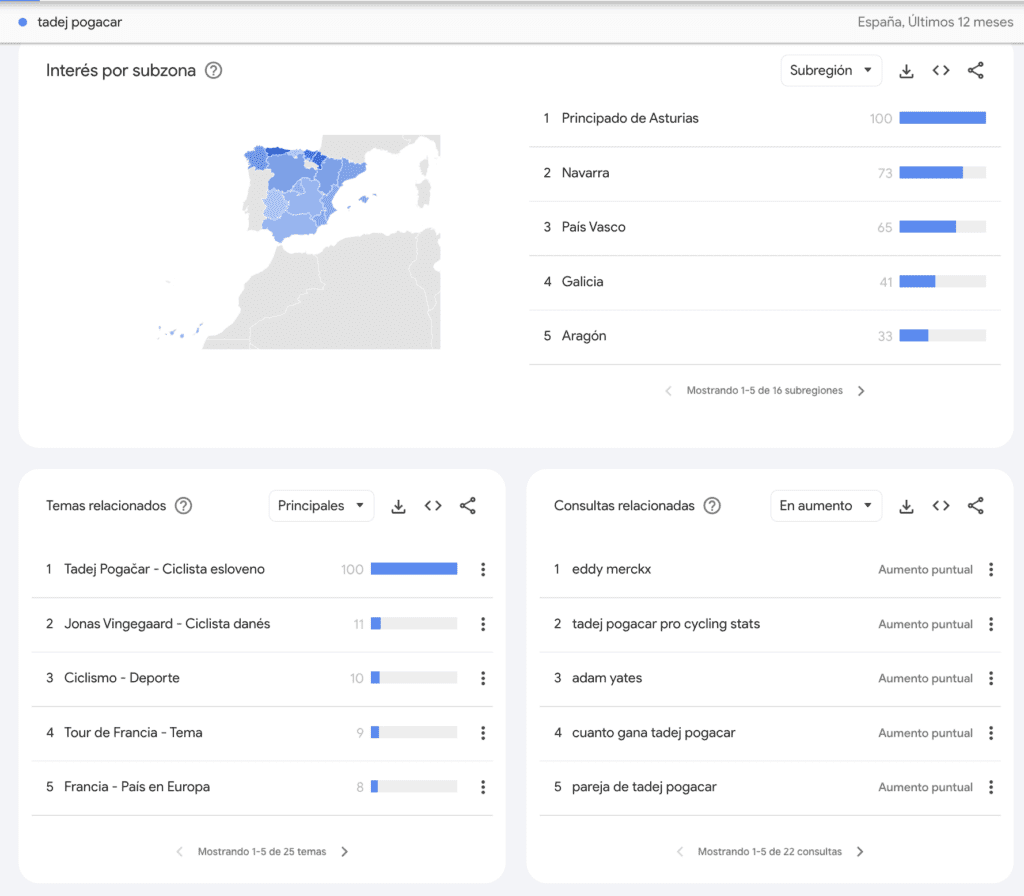
If you search in Google Trends for the name of the cyclist Tadej Pogačar (you can spell it however you want), you will see that at the bottom left there is a panel called “Related Topics”. Here are the related entities.
For instance, this cyclist is associated with the entity Jonas Vingegaard, his main competitor in the world of cycling, also with the entity Tour de France, the competition he has won, and the entity cycling, which is the professional sport in which he competes.
If we search for the cyclist Tadej Pogačar on Google, we will see a block on the right with more entities related to the attributes of the entity “Tadej Pogačar.”
Age, birth, weight, height… etc.
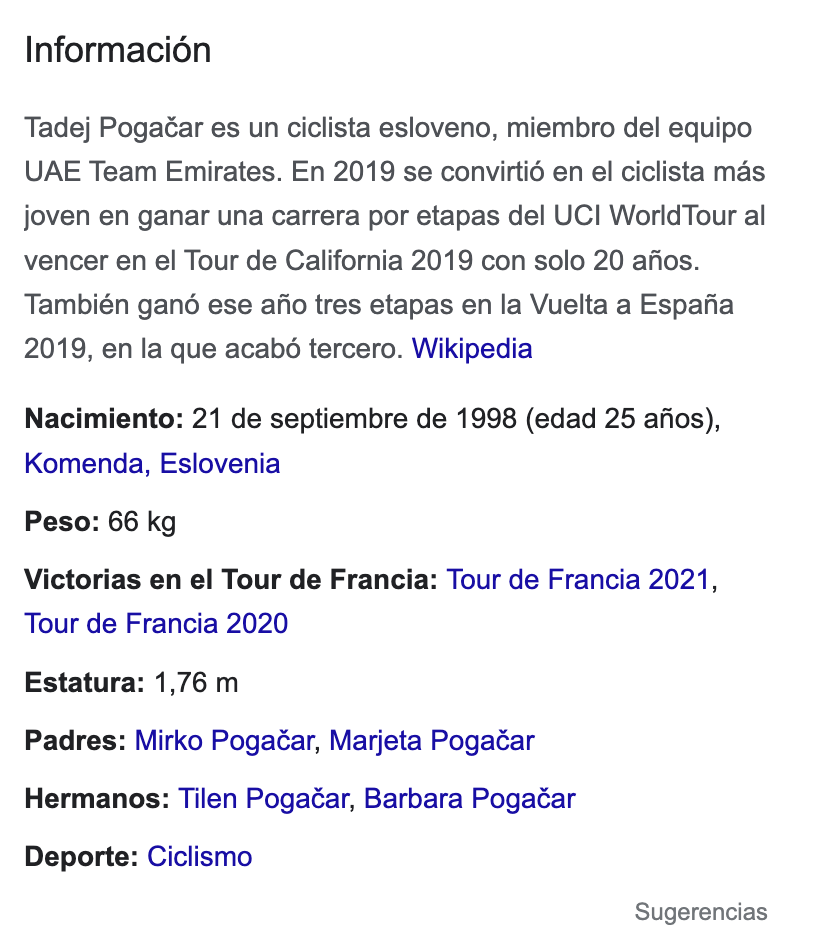
In summary, this is an information architecture that Google uses to provide context to keywords and enhance the search experience. It’s important to remember that these are found within the functionality of the search engine itself and can be seen, if you look closely, throughout the entire ecosystem of Google’s search applications and YouTube. In fact, other applications like Google Maps or Google Translate also use entities.
Types of entities
The types of entities include, among many others, the following:
- People.
- Places.
- Organizations.
- Events.
- Products.
- Ideas.
- Terms.
- Companies.
The list is very extensive and broad, as extensive as language itself. Additionally, it is a list that is continuously updated.
How to Analyze Entities with ChatGPT
Carlos Ortega has recently published a prompt that can help you identify the entities in a text.
You need to add this prompt to ChatGPT4:
“List the entities mentioned in the following text and arrange them in a table along with columns for: the type of entity in each case, the relationships they have with each other, and their degree of prominence within the text. Also perform a sentiment analysis of each entity and score it, considering that 1 is very positive and -1 is very negative: [Insert your text here]”
In my example, I used this text from Google’s official documentation:
“When you created your website, you probably did it with your users in mind to make it easier for them to search and explore your content. Some of these users are searchers who help others discover your content. SEO, which stands for ‘search engine optimization’, is about helping search engines understand your content and helping users find your site and make a decision about whether to visit it through a search engine.
The basic Search Guidelines describe the most important elements for your website to appear in Google Search. While we do not guarantee that a specific site will be added to Google’s index, sites that follow the basic Search Guidelines are more likely to appear in Google’s search results. SEO involves taking the next step and working to improve your site’s presence in Search. This guide describes some of the most common and effective improvements you can apply to your site.
Unfortunately, there are no secrets to automatically positioning your site in first place on Google. In fact, some of the suggestions may not even be applicable to your business. However, if you follow the best practices, search engines (not just Google) will be able to crawl, index, and understand your content more easily.”
The result you will get will be similar to this table:
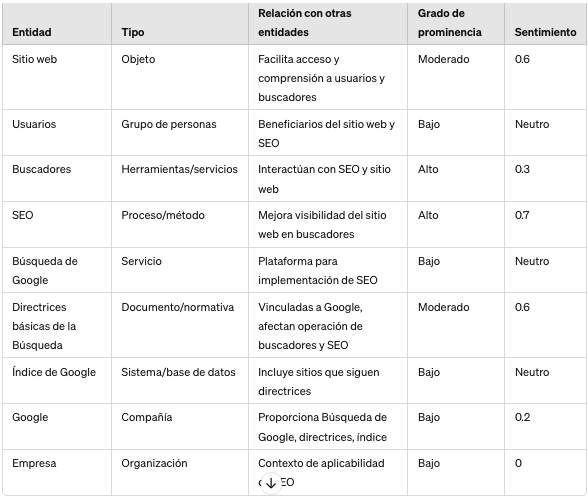
The first two columns of the table are the important part. There you will see the entities and the types of entities. This can help you understand the most important concepts of a text and which related entities it might mention. Additionally, it can also help you improve the internal linking of your website.
